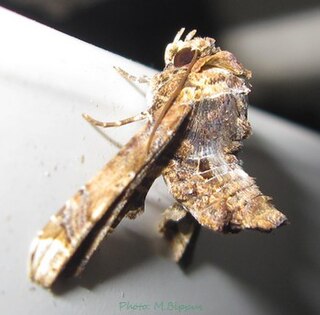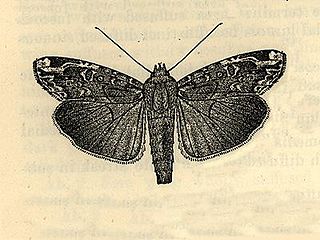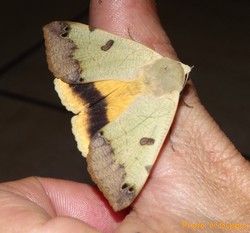
Heliothis is a genus of moths in the family Noctuidae. It was first described by Ferdinand Ochsenheimer in 1816. Some of the species have larvae which are agricultural pests on crop species such as tobacco, cotton, soybean and pigeon pea. Some species originally in this genus have been moved to other genera, see Chloridea and Helicoverpa.

Acronicta is a genus of noctuid moths containing about 150 species distributed mainly in the temperate Holarctic, with some in adjacent subtropical regions. The genus was erected by Carl Linnaeus in his 1758 10th edition of Systema Naturae. Caterpillars of most Acronicta species are unmistakable, with brightly colored hairy spikes, and often feed quite visibly on common foliate trees. The hairy spikes may contain poison, which cause itchy, painful, swollen rash in humans on contact. The larva of the smeared dagger moth is unusually hairy even for this genus. Acronicta species are generally known as dagger moths, as most have one or more black dagger-shaped markings on their forewing uppersides. But some species have a conspicuous dark ring marking instead.

Acontia is a genus of moths of the family Noctuidae. The genus was named by Ferdinand Ochsenheimer in 1816. Eusceptis, Pseudalypia and Spragueia are sometimes included in the present genus, but here they are tentatively treated as different pending further research. Many species of Tarache were also once placed here.

Amyna is a genus of moths of the family Noctuidae erected by Achille Guenée in 1852.

Conservula is a genus of moths of the family Noctuidae described by Augustus Radcliffe Grote in 1874.

Corythurus is a genus of moths of the family Noctuidae.
Ilyrgis is a genus of moths of the family Noctuidae first described by Francis Walker in 1859.
Erygia is a genus of moths in the family Erebidae erected by Achille Guenée in 1852.

Eudocima is a genus of moths of the family Erebidae with numerous tropical species. The genus was first categorised by Gustaf Johan Billberg in 1820, and species currently in the genus have been placed under a range of other genera in the past. Adult moths in the genus are known for puncturing and feeding on the juices of fruits, because of which they are considered as pests by horticulturists.

Eurois is a genus of moths of the family Noctuidae first described by Jacob Hübner in 1821.

Eutelia is a genus of moths of the family Euteliidae erected by Jacob Hübner in 1823.

Leucania is a genus of moths of the family Noctuidae first described by Ferdinand Ochsenheimer in 1816.

Magusa is a genus of moths of the family Noctuidae first described by Francis Walker in 1857.

Nonagria is a genus of moths of the family Noctuidae first described by Ferdinand Ochsenheimer in 1816.
Olulis is a genus of moths of the family Noctuidae first described by Francis Walker in 1863.

Ophiusa is a genus of moths in the family Erebidae erected by Ferdinand Ochsenheimer in 1816.

Paectes is a genus of moths of the family Euteliidae erected by Jacob Hübner in 1818.

Polia is a genus of moths of the family Noctuidae described by Ochsenheimer in 1816.

Pterocyclophora is a genus of moths in the family Erebidae. The genus was erected by George Hampson in 1893

Tarache is a genus of moths of the family Noctuidae erected by Jacob Hübner. It includes most former New World Acontia species. Lepidoptera and Some Other Life Forms and The Global Lepidoptera Names Index report this name as a synonym of Acontia.
















